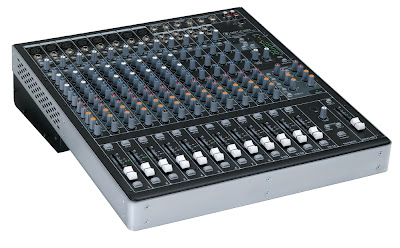Distortion Explained Part 2
Part 2 of this article covers the differences between various types of guitar distortions - Overdrives, Fuzz, hi-gain and more.
Part 1 is here.
Distortion Pedals
Overdrive/Crunch
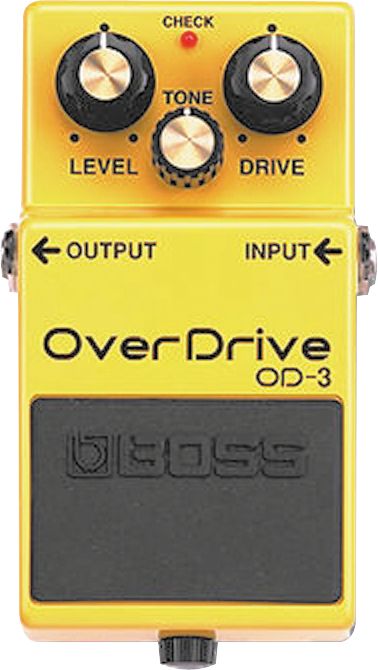
Some
distortion effects provide an “overdrive” effect. Either by using a
vacuum tube, or by using simulated tube modeling techniques, the top of
the wave form is compressed, giving a smoother distorted signal than
regular distortion effects. When an overdrive effect is used at a high
setting, the sound’s waveform can become clipped, which imparts a gritty
or “dirty” tone, which sounds like a tube amplifier “driven” to its
limit. Used in conjunction with an amplifier, especially a tube
amplifier, driven to the point of mild tonal breakup short of what would
be generally considered distortion or overdrive, or along with another, stronger overdrive or distortion pedal, these can
produce extremely thick distortion. Today there is a huge variety of
overdrive pedals including the Boss OD-3 Overdrive.
Overdrive Distortion
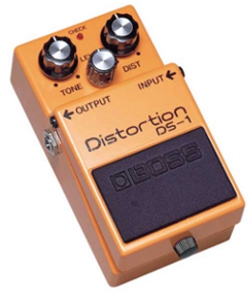
Overdrive
distortion is a well-known distortion. While the general purpose is to
emulate classic “warm-tube” sounds, distortion pedals can be
distinguished from overdrive pedals in that the intent is to provide
players with instant access to the sound of a high-gain Marshall
amplifier such as the JCM800 pushed past the point of tonal breakup and
into the range of tonal distortion known to electric guitarists as
“saturated gain.” Some guitarists will use these pedals along with an
already distorted amp or along with a milder overdrive effect to produce
radically high-gain sounds. Although most distortion devices use
solid-state circuitry, some “tube distortion” pedals are designed with
preamplifier vacuum tubes. In some cases, tube distortion pedals use
power tubes or a preamp tube used as a power tube driving a built-in
“dummy load.”
The Boss DS-1 Distortion is a solid state overdrive distortion pedal.
Fuzz
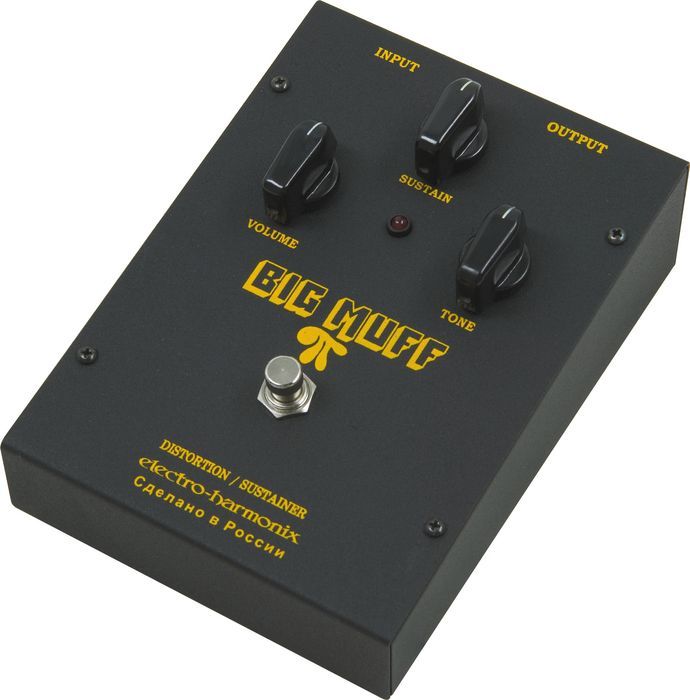
Fuzz
was originally intended to recreate the classic 1960’s tone of an
overdriven tube amp combined with torn speaker cones. Oldschool guitar
players would use a screwdriver to poke several holes through the the
guitar amp speaker to achieve a similar sound. Since the original
designs, more extreme fuzz pedals have been designed and produced,
incorporating octave-up effects, oscillation, gating, and greater
amounts of distortion. The Electro-Harmonix Big Muff is a classic fuzz
pedal.
Hi-Gain
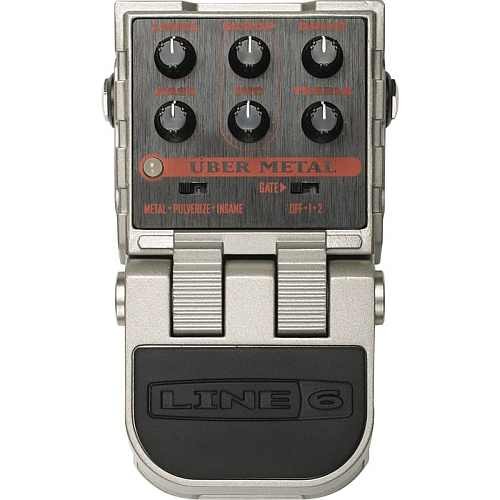
Hi-Gain
is the sound most used in Heavy metal. High gain in normal electric
guitar playing simply references a thick sound produced by heavily
overdriven amplifier tubes, a distortion pedal, or some combination of
both–the essential component is the typically loud, thick, harmonically
rich, and sustaining quality of the tone. However, the Hi-Gain sound of
modern pedals is somewhat distinct from, although descended from, this
sound. The distortion often produces sounds not possible any other way.
Many extreme distortions are either hi-gain or the descendants of such.
An example of a hi-gain pedal is the Line 6 Uber Metal
Power-tube pedal
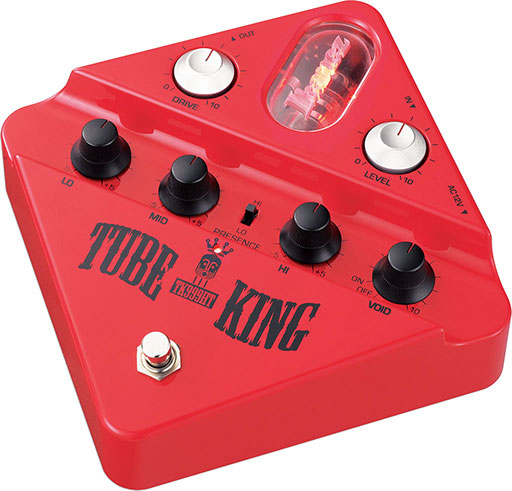
Power
tube distortion is a unique kind of saturation when tube amps output
stages are overdriven, unfortunately this kind of really powerful
distortion only happens at high volumes. A Power-Tube pedal contains a
power tube and optional dummy load, or a preamp tube used as a power
tube. This allows the device to produce power-tube distortion
independently of volume.
An example of a tube based distortion pedal is the Ibanez Tube King
Another way to distort
Digital Wave Shaping
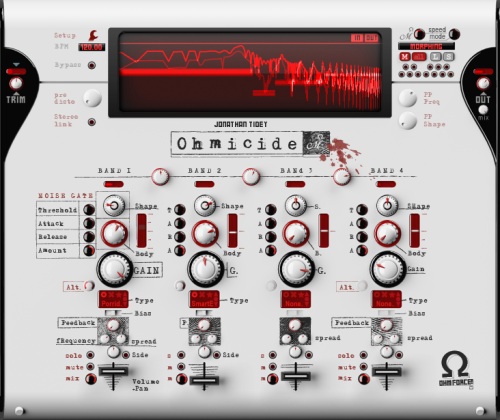
The
word clipping in recording is usually a bad thing. And generally it is,
unless we’re trying to distort something on purpose. In the digital
world we can use powerful wave shaping tools to drastically distort and
manipulate a sound. Rather than subject you to the technical explanation
of how it works, just listen to Nine Inch Nails, they use this a lot.
It’s perfect for really harsh, aggressive, unnatural and broken sounds. The Ohmforce Ohmicide plugin is an example of this style.
Why Is This Important?
Alright, so why did I just explain those
different types of distortion sounds? Because knowing those sounds can
help you be a better musician, engineer and producer. It will help you
make decisions on what gear to purchase and what is appropriate for a
song.
What Else?
Besides guitar what else is distortion good for? Well, pretty much anything, as long as it’s appropriate for the song.
- Slight distortion can make something sound more exciting, too much can sometimes make it really tiny sounding.
- When recording electric guitars, you can get a way bigger sound by
using less gain and recording the same part multiple times, double or
quad-tracking.
- Distortion can sound really cool on drums, but you may have to heavily gate the drums, the sustain can get out of control.





